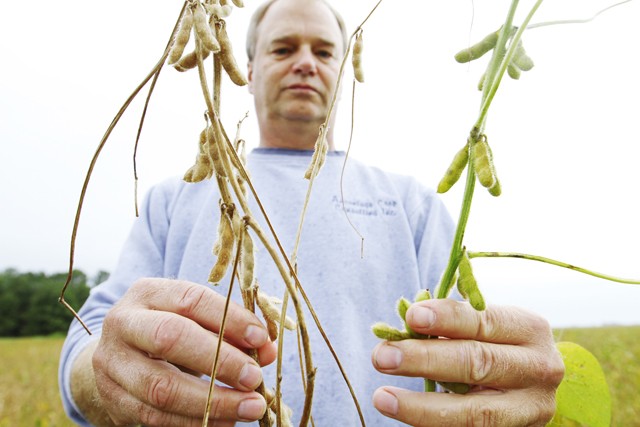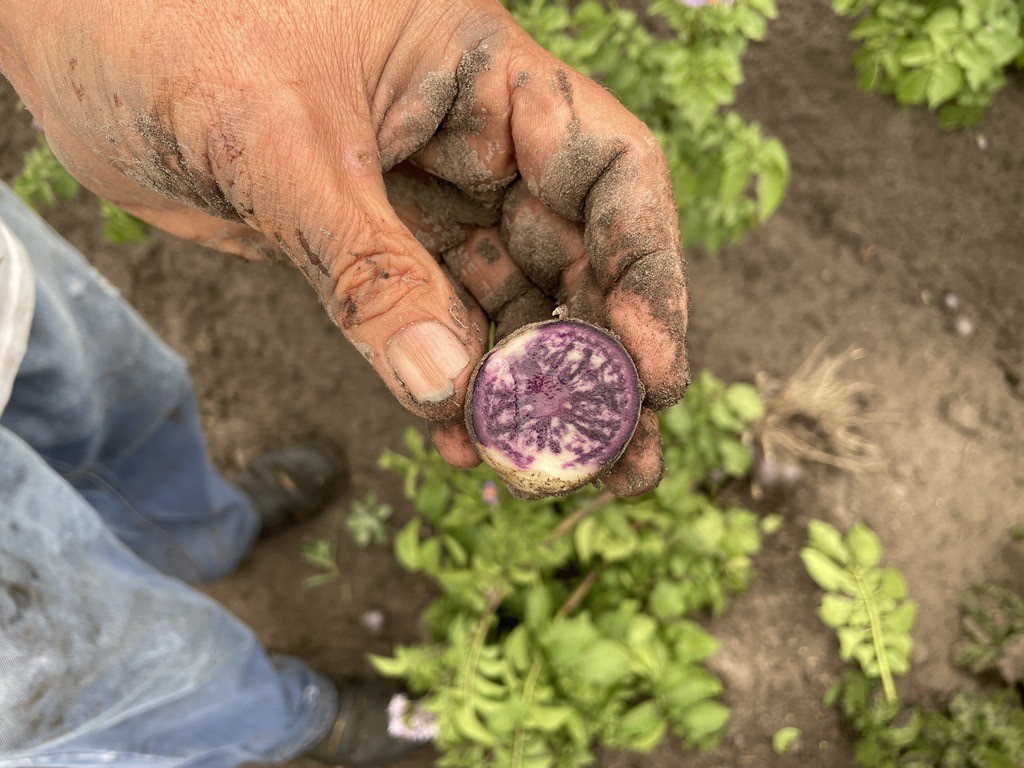Soybean diseases with the potential to damage MinnesotaâÄôs yield this season have been appearing in more fields than normal.
Sudden Death Syndrome, Phytophthora and white mold are all diseases which appear late during MinnesotaâÄôs soybean season, but this ye ar some growers are seeing a large increase in the number of affected plants in their fields.
James Kurle, a University of Minnesota soybean disease specialist, first discovered SDS in Minnesota in 2004.
âÄúIt seems to be spreading. I first found it in the state in just a couple of locations, probably only three counties,âÄù Kurle said.
Since then, the disease has been confirmed in at least 23 counties, and this year SDS has manifested itself in counties where it has never been seen before, according to University soybean expert Dean Malvick.
SDS is caused by fungus cultures and is made more severe by wet conditions.
Bryce Nelson, a crop consultant for southern Minnesota and northern Iowa, said this is the first year heâÄôs seen it so widespread across the state.
Like its name implies, the soybean plant dies very suddenly when stricken with SDS.
Fortunately, SDS is not likely to be uniform across the field, Kurle said. But in severely infected areas of the field, growers may see a yield loss of 60 to 70 percent.
Like SDS, Phytophthora is a disease that has been âÄúparticularly commonâÄù this season, Malvick said.
Phytophthora is a root disease that has been present in Minnesota much longer than SDS.
Phytophthora tends to affect the plant very early and will often interfere with germination. If this is the case, the plant wonâÄôt even come out of the ground, Kurle said. âÄúIf they do come up, they âĦ form a couple of ears, and as soon as things dry up a bit, they just collapse.âÄù
A third disease that Minnesota growers are watching for this year is white mold.
White mold is different from Phytophthora and SDS because it is a stem pathogen, while the other diseases usually spread through the soil. It is a disease that requires high humidity, rain and moderate temperatures.
If there are ideal growing conditions, soybeans will have lush canopies that hold moisture well, which is conducive to the disease, Kurle said.
Kevin Paap, Minnesota Farm Bureau president and a soybean grower in Blue Earth County, has seen a rise in SDS in his fields this season.
The problem with all three diseases is that they are most prevalent during excellent soybean growing conditions.
âÄúItâÄôs really kind of a paradox,âÄù Kurle said.
âÄúThe reason we had SDS this year is because we had more than normal July rains. That is bad for the disease, but we also have to remember that itâÄôs good for the rest of the field,âÄù Paap said, âÄúyou kind of have to take the good with the bad.âÄù
Prevention of all three diseases is limited at this point. For starters, growers can use better field management techniques. A grower could pay attention to drainage in the field to decrease wet soil or watch where heavy equipment is repeatedly driven over and interferes with soil drainage, Kurle said, but the best response is variety selection.
âÄúThe only thing you can do for these diseases is plant a variety that has a higher tolerance,âÄù Nelson said.
There is no âÄútrue toleranceâÄù plant, but if growers plant a variety that has a better tolerance, and conditions that encourage diseases re-appear, then more tolerant plants may resist disease expansion.
The Department of Plant Pathology at the University is conducting research toward developing more resistant soybean varieties.
âÄúAt the U of M, we have been working on selecting more resistant soybean varieties, understanding the ecology and survival of the pathogens, and on developing rapid molecular methods to detect the pathogens and diagnose these diseases,âÄù Malvick said.
The researchers evaluate varieties for resistance through an intense breeding program and challenge plants with infected seeds, Kurle said. Because of the current research done in plant pathology, Kurle said growers will be able to respond to the increase in soybean diseases.
Researchers hope to someday produce varieties tolerant of multiple diseases by stacking resistances now. As it stands, farmers are generally able to combat one problem at a time.
A lot of times the grower focuses on battling one problem in a season because not many varieties incorporate resistance to multiple diseases, Kurle said. âÄúSo the farmer has to focus on their most severe problem.âÄù
Late-season disease could harm soybean yield
The Department of Plant Pathology is researching the development of disease-resistant soybean varieties.

Image by Joe Michaud-Scorza
Bryce Nelson shows how sudden death syndrome has affected soybeans across Southern Minnesota Thursday in Rose Creek, Minnesota.
by Ashley Bray
Published September 13, 2010
0
More to Discover







